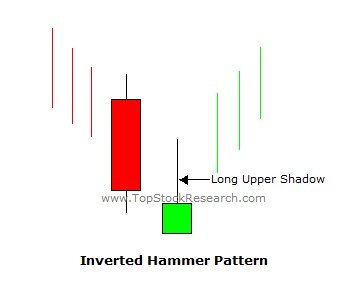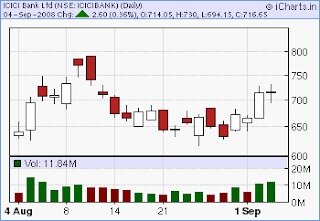
Like a savvy matador, individual investors should keep an eye on the bull’s moves, and adjust accordingly — but always stay focused on their overall strategy and goals. Though a charging bull and a hibernating bear are useful images, bear and bull markets are thought to have gotten their names from the way they attack. A bull market tends to occur when the economy is strengthening from increased business https://trading-market.org/ investments and higher consumer spending. As people spend more on goods and services, businesses are able to pull in more revenue, create jobs, and invest in new technologies. When the stock market is on the rise, more and more people start investing in getting in on the action. While investing during a bull market can be profitable, it’s important to remember that risk is always involved.
The stock market’s average annual return from 1926 to 2021 was 12.3%. With that in mind, long-term investors shouldn’t get caught up in the type of market they’re in but stick to their investment strategy. The stock market is volatile by nature, and you should expect the value of your portfolio to fluctuate over time widely. Average investors need to maintain a long-term perspective during a bull market.
Crypto Lawyer Blasts SEC’s Ripple Lawsuit as Case Drags On – CryptoPotato
Crypto Lawyer Blasts SEC’s Ripple Lawsuit as Case Drags On.
Posted: Wed, 10 May 2023 10:37:15 GMT [source]
Moreover, recessions are often accompanied by a negative turn in investor and consumer sentiment, where market psychology becomes more concerned with fear or reducing risk than greed or risk-taking. Companies that are performing well in a bull market may also choose to reward their shareholders by increasing dividends, which can be attractive for income-focused investors. Bear investors believe that the value of a specific security or industry is likely to decline in the future.
Bull Sentence Examples
Widespread fears over economic and social damage brought by the global spread of the new Coronavirus, as businesses shuttered and millions of people were thrown out of work. You can usually tell which animal in a pasture is a bull by its large size and horns. Trying to time the market can actually negatively affect you—it’s difficult for even the experts to do.
How Quality-Driven Value Investing Achieves Alpha – Seeking Alpha
How Quality-Driven Value Investing Achieves Alpha.
Posted: Sat, 13 May 2023 06:51:33 GMT [source]
Improve your vocabulary with English Vocabulary in Use from Cambridge.Learn words you need to communicate with confidence. The housing bubble was directly related to and possibly the root cause of the 2007–2008 financial crisis. To limit the risk of losses, a bull may employ the use of stop-loss orders.
They are also incorporated into festivals and folk events such as the Running of the Bulls and were seen in ancient sports such as bull-leaping. As the price declines, bull investors must choose whether to hold or sell the security. A bull is an investor who thinks the market, a specific security, or an industry is poised to rise. Investors who adopt a bull approach purchase securities under the assumption that they can sell them later at a higher price. It’s almost impossible to tell when the market is at its peak, and even professionals rarely manage to call it right. Not only is it possible that you sell too late — but you might also end up selling way too early, missing out on future profits.
Opportunities to assume the position of a bull investor exist even when an overall market or sector is in a bearish trend. Bull investors look for growth opportunities within the down market and may look to capitalize should market conditions reverse. The term “bull” is also believed to describe how confident investors “charge” the market, much like how provoked bulls tend to charge at full speed toward their opponents. Bulls appears as charges and crests on the arms of several British families. Winged bulls appear as supporters in the arms of the Worshipful Company of Butchers.[38] In modern times, the bull is used as a mascot by both amateur and professional sports teams.
Bull
Although it is hard to determine when the bottom and peak will take place, most losses will be minimal and are usually temporary. Below, we’ll explore several prominent strategies investors utilize during bull market periods. However, because it is difficult to assess the state of the market as it exists currently, these strategies involve at least some degree of risk as well. A bull market is the condition definition bull of a financial market in which prices are rising or are expected to rise. The term “bull market” is most often used to refer to the stock market but can be applied to anything that is traded, such as bonds, real estate, currencies, and commodities. When the economy hits a rough patch, for instance in the face of recession or spike in unemployment, it becomes difficult to sustain rising stock prices.
Bull markets generally take place when the economy is strengthening or when it is already strong. They tend to happen in line with strong gross domestic product (GDP) and a drop in unemployment and will often coincide with a rise in corporate profits. Investor confidence will also tend to climb throughout a bull market period. The overall demand for stocks will be positive, along with the overall tone of the market. In addition, there will be a general increase in the amount of IPO activity during bull markets.
How to use bull in a sentence
People can be bullish or bearish on any investment opportunity, including real estate and commodities, such as soybeans, crude oil, or even peanuts. Despite the inevitable dips, over an extended time horizon, the stock market has never failed to rise. So not being invested in the market means missing out over the long haul.

The Housing Bubble — a dramatic growth in the real estate sector — began after the federal government deeply cut interest rates in hopes of encouraging investment. The bull market ended in early October 2007 as stocks hit their peak, marking the start of a recession. Because prices of securities rise and fall essentially continuously during trading, the term “bull market” is typically reserved for extended periods in which a large portion of security prices are rising.
A bull is an intact (i.e., not castrated) adult male of the species Bos taurus (Cow). More muscular and aggressive than the females of the same species (i.e., cows), bulls have long been an important symbol in many religions, including for sacrifices. These animals play a significant role in beef ranching, dairy farming, and a variety of sporting and cultural activities, including bullfighting and bull riding. Let’s break down just what bull markets are, how it differs from a bear market, and what they mean for both institutional and individual investors.
A bear market occurs when the market experiences prolong price declines—typically when securities prices fall by 20% or more and there is negative investor sentiment. They die when the market has changed fundamentally, when prices have risen too high or too fast, or when some other event deflates investor confidence in the market. No two bull markets are the same, but they last around 2.7 years on average. This is much longer than bear markets, which tend to last 9.7 months on average.
If an aggressive bull is allowed to graze outside, additional precautions may be needed to help avoid him harming people. One method is a bull mask, which either covers the bull’s eyes completely, or restricts his vision to the ground immediately in front of him, so he cannot see his potential victim. Another method is to attach a length of chain to the bull’s nose-ring, so that if he ducks his head to charge, he steps on the chain and is brought up short.
One of the best examples of a bull market was the sharp rise in US technology stocks during the late 1990s. Between 1995 and its highest point in March 2000, the Nasdaq Index gained a whopping 400%. In these prime post-war years, the S&P 500 rose 267% over 86 months, which works out to a commendable annualized return of 20%. On the home front, consumer goods to fuel the Baby Boom were the main driver, while a strong export market also helped companies grow. The Federal Reserve raising interest rates and international tension brought this bull’s run to a stop, beginning a bear market phase.
Close your vocabulary gaps with personalized learning that focuses on teaching the
words you need to know. All content on this website, including dictionary, thesaurus, literature, geography, and other reference data is for informational purposes only. This information should not be considered complete, up to date, and is not intended to be used in place of a visit, consultation, or advice of a legal, medical, or any other professional.

The opposite of a bull market is a bear market, which is characterized by falling prices and investor pessimism. The terms “bull” and “bear” are believed to come from the way these animals attack their opponents. A bull market is an extended period of time when stock prices rise and investors are optimistic. Bull markets can last for months or even years, and stocks tend to outperform other investments like bonds.
The terms “bear” (for down markets) and “bull” (for up markets) are thought by some to derive from the way in which each animal attacks its opponents. That is, a bull will thrust its horns up into the air, while a bear will swipe down. These actions were then related metaphorically to the movement of a market. Some investors watch for retracements within a bull market and move to buy during these periods.
- If you are bullish on the S&P 500, you attempt to profit from a rise in the index by going long.
- People can be bullish or bearish on any investment opportunity, including real estate and commodities, such as soybeans, crude oil, or even peanuts.
- Between 1995 and its highest point in March 2000, the Nasdaq Index gained a whopping 400%.
- Investors utilizing this strategy will take very active roles, using short-selling and other techniques to attempt to squeeze out maximum gains as shifts occur within the context of a larger bull market.
Since bull markets are difficult to predict, analysts can typically only recognize this phenomenon after it has happened. A notable bull market in recent history was the period between 2003 and 2007. During this time, the S&P 500 increased by a significant margin after a previous decline; as the 2008 financial crisis took effect, major declines occurred again after the bull market run. Investors who want to benefit from a bull market should buy early in order to take advantage of rising prices and sell them when they’ve reached their peak.
Some investments — like the Mega Cap tech stock, which is approaching a 50% gain compared to 2022 — are showing promising improvements. The S&P 500 has increased by nearly 14% since its low point last October and is only 6% away from becoming a bull market. When attempting to time the market, you risk buying high before the market declines. That can lead you to make rash decisions, like selling at a loss to try and salvage some cash. Bull markets can last for years, but they must eventually come to an end. When the stock market experiences a prolonged downturn, it’s called a bear market.
Nonetheless, perhaps the most common definition of a bull market is a situation in which stock prices rise by 20% or more from recent lows. Most are capable of aggressive behavior and require careful handling to ensure safety of humans and other animals. Bullishness and bearishness do not necessarily apply only to the stock market.

Recent Comments